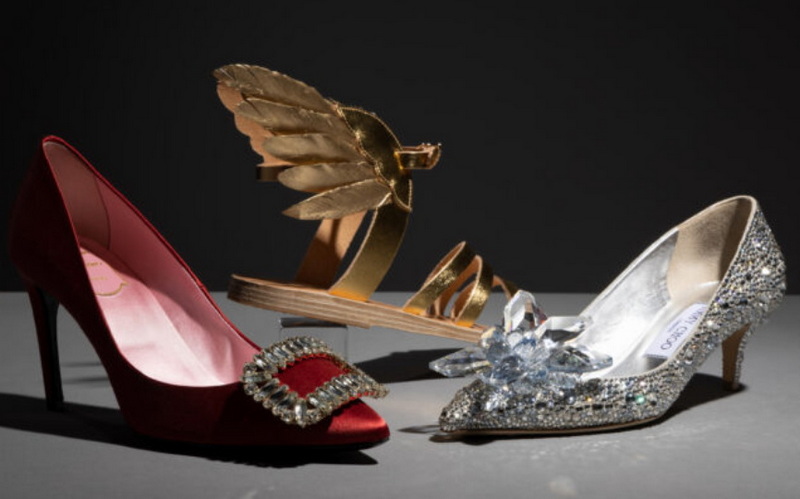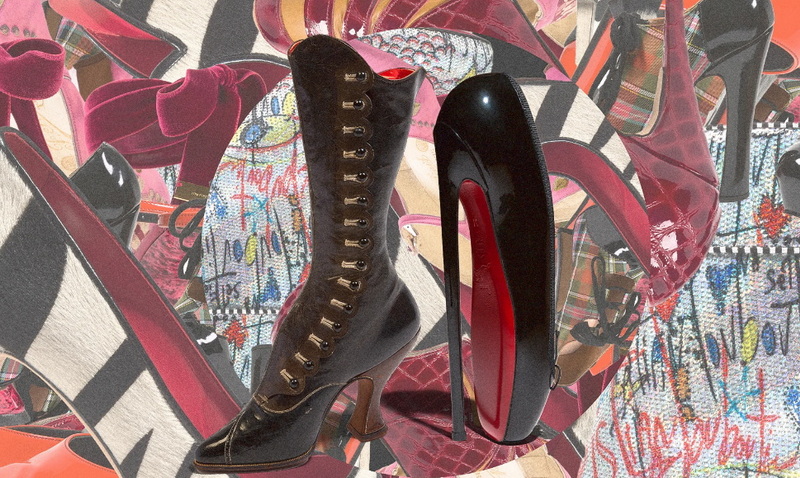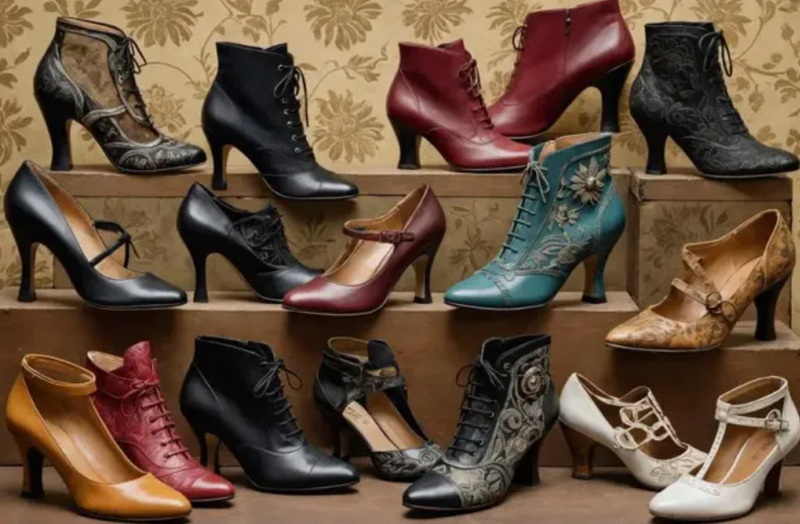Content Menu
● The Origins of High Heels
>> Ancient Beginnings
● The Persian Influence
● The European Adoption
>> King Louis XIV and the Red Heel
● The Shift to Women's Fashion
>> Catherine de Medici: The Trendsetter
>> The 17th Century Fashion Revolution
● The Evolution of Women's Heels
>> The 18th Century: Height and Extravagance
>> The 19th Century: The Rise of the Stiletto
● The Modern Era of High Heels
>> Salvatore Ferragamo and the Steel Arch
>> The Stiletto Revolution
● High Heels in Contemporary Fashion
>> Diversity in Design
>> Cultural Impact
● The Future of High Heels
● Conclusion
● FAQ
>> 1. When were high heels first invented?
>> 2. Who popularized high heels for women in Europe?
>> 3. What was the original purpose of high heels?
>> 4. When did high heels become associated primarily with women's fashion?
>> 5. Who invented the stiletto heel?
● Citations:
The Origins of High Heels
High heels have become an iconic symbol of femininity and fashion, but their origins are far from what one might expect. The history of high heels is a fascinating journey through time, spanning various cultures and purposes. To understand who invented heels for women, we must first explore the early beginnings of elevated footwear.

Ancient Beginnings
The concept of elevated shoes dates back to ancient civilizations. In Egypt around 3500 BCE, the first high heels were worn by butchers[11]. These early "butcher heels" served a practical purpose – to keep their feet clean from animal blood during their work. This utilitarian design was later adopted by Egyptian nobility for ceremonial purposes, marking one of the earliest instances of heels being associated with status and prestige[11].
The Persian Influence
While the Egyptians may have pioneered elevated footwear, it was the Persians who truly popularized what we now recognize as high heels. In the 10th century, Persian cavalry wore heeled boots as part of their riding attire[7]. These heels served a crucial function – they helped riders secure their feet in the stirrups, providing stability and control while on horseback[1].
The European Adoption
The transition of high heels from military gear to fashion statement began in the late 16th century. When Persian diplomats visited European courts, their distinctive footwear caught the attention of Western aristocrats[4]. Fascinated by the novel design, European nobility began adopting high heels as a symbol of status and power.
King Louis XIV and the Red Heel
One of the most notable figures in the history of high heels is King Louis XIV of France. In the 17th century, he popularized the wearing of red-heeled shoes among the French nobility[7]. These red heels became a symbol of privilege and power, with the height of the heel often indicating the wearer's social status[1].
The Shift to Women's Fashion
While high heels were initially associated with men, particularly in European aristocracy, they gradually became a staple of women's fashion. This transition occurred over several centuries and was influenced by various social and cultural factors.
Catherine de Medici: The Trendsetter
One of the earliest and most influential women to popularize high heels was Catherine de Medici. In 1533, at the age of 14, Catherine was engaged to the Duke of Orleans, who was significantly taller than her[12]. To appear taller and more confident on her wedding day, Catherine commissioned a pair of two-inch high heels[12]. This bold fashion choice set a new trend among the European elite, marking a significant moment in the history of women's footwear.
The 17th Century Fashion Revolution
By the 17th century, high heels had become a prominent feature in women's fashion. This period saw a significant shift in women's lifestyles and attitudes, reflected in their fashion choices. Women began adopting shorter hairstyles, smoking pipes, and wearing high heels as expressions of independence and fashion-forwardness[12].

The Evolution of Women's Heels
As high heels became increasingly associated with women's fashion, their design evolved to reflect changing tastes and societal norms.
The 18th Century: Height and Extravagance
In the 18th century, height became a focal point of fashion. High heels provided a means to achieve this desired elevation, not just in footwear but also in hairstyles and clothing[12]. Women's high heels during this period were often elaborately decorated, featuring bright colors, jeweled adornments, and various materials[12].
The 19th Century: The Rise of the Stiletto
The 19th century saw further refinements in heel design. The invention of the sewing machine in the 1850s revolutionized shoe production, allowing for more intricate and varied designs[4]. It was during this period that the precursor to the modern stiletto heel began to emerge.
The Modern Era of High Heels
The 20th century brought about significant changes in the design and perception of high heels for women.
Salvatore Ferragamo and the Steel Arch
Italian shoe designer Salvatore Ferragamo made a significant contribution to the evolution of high heels by inventing the steel arch[9]. This innovation provided better support and allowed for higher, more stable heels. Ferragamo's designs, famously worn by Marilyn Monroe, helped popularize the stiletto heel and enhanced the allure of high heels in popular culture[9].
The Stiletto Revolution
While the exact inventor of the stiletto heel is debated, with some crediting French designers Charles Jourdan or Roger Vivier, there's no doubt that this style revolutionized women's footwear in the mid-20th century[9]. The thin, high heel became an icon of femininity and sophistication, featured prominently in fashion magazines and Hollywood films.
High Heels in Contemporary Fashion
Today, high heels remain a significant part of women's fashion, with a wide variety of styles catering to different preferences and occasions.
Diversity in Design
Modern high heels come in an array of designs, from classic pumps to platform shoes, wedges, and block heels. Designers continue to innovate, experimenting with materials, shapes, and heights to create unique and eye-catching footwear.
Cultural Impact
High heels have become more than just a fashion accessory; they are often seen as a symbol of empowerment and self-expression. However, they have also been the subject of debate regarding health concerns and societal expectations of femininity.
The Future of High Heels
As fashion continues to evolve, so too does the design and perception of high heels. With increasing focus on comfort and sustainability, we're seeing innovations in materials and construction techniques that aim to make high heels more wearable and environmentally friendly.
Conclusion
The invention of heels for women was not a single event but rather a gradual evolution influenced by various cultures, historical figures, and societal changes. From their origins in ancient Egypt and Persia to their adoption by European aristocracy and eventual transformation into a symbol of femininity, high heels have a rich and complex history.
While we can't attribute the invention of women's heels to a single individual, figures like Catherine de Medici played crucial roles in popularizing them as a fashion statement for women. The continued evolution of high heels through the centuries, marked by innovations from designers like Salvatore Ferragamo and the creation of iconic styles like the stiletto, has cemented their place in fashion history.
Today, high heels remain a significant part of women's fashion, symbolizing elegance, power, and personal style. As we look to the future, it's clear that high heels will continue to evolve, reflecting changing tastes, technologies, and societal attitudes.

FAQ
1. When were high heels first invented?
The concept of elevated footwear dates back to ancient Egypt around 3500 BCE, where butchers wore "butcher heels" to keep their feet clean from animal blood[11]. However, the high heels as we know them today evolved much later, with significant developments in the 10th century in Persia and later in 16th-17th century Europe.
2. Who popularized high heels for women in Europe?
Catherine de Medici is often credited with popularizing high heels for women in Europe. In 1533, at the age of 14, she wore two-inch high heels for her wedding to the Duke of Orleans, setting a new fashion trend among European nobility[12].
3. What was the original purpose of high heels?
The original purpose of high heels varied across cultures and time periods. In ancient Egypt, they were used by butchers for practical purposes. In Persia, they were part of cavalry attire to help secure riders' feet in stirrups. In Europe, they initially symbolized status and power among the nobility before becoming a fashion statement[1][7].
4. When did high heels become associated primarily with women's fashion?
The shift of high heels from men's to women's fashion occurred gradually over the 17th and 18th centuries. By the 18th century, men had largely abandoned high heels, while they became increasingly popular and diverse in women's fashion[12].
5. Who invented the stiletto heel?
The invention of the stiletto heel is debated. Some credit Italian designer Salvatore Ferragamo for paving the way with his invention of the steel arch. Others attribute it to French designers like Charles Jourdan or Roger Vivier. Regardless of the exact inventor, the stiletto heel emerged and gained popularity in the mid-20th century[9].
Citations:
[1] https://londonrunway.co.uk/the-history-of-high-heels/
[2] https://shoefairyofficial.com/blogs/news/the-history-of-high-heels-10-facts-that-surprise-you
[3] https://unsplash.com/s/photos/woman-high-heels
[4] https://www.youtube.com/watch?v=tVIxPRcZu1E
[5] https://footwearmagazine.com/guide-to-understanding-high-heel-heights/
[6] https://www.healthy-veins.com/posttype-faq/bad-wear-high-heeled-shoes/
[7] https://burjushoes.com/blogs/default-blog/the-history-of-high-heels-10-facts-that-surprise-you
[8] https://en.wikipedia.org/wiki/High-heeled_shoe
[9] https://themoderndirectory.com/education/the-history-of-high-heels/
[10] https://www.charleskeith.com/om/guides/heels.html
[11] https://vivaglammagazine.com/your-questions-about-high-heels-answered/
[12] https://study.com/academy/lesson/who-invented-high-heels.html

















